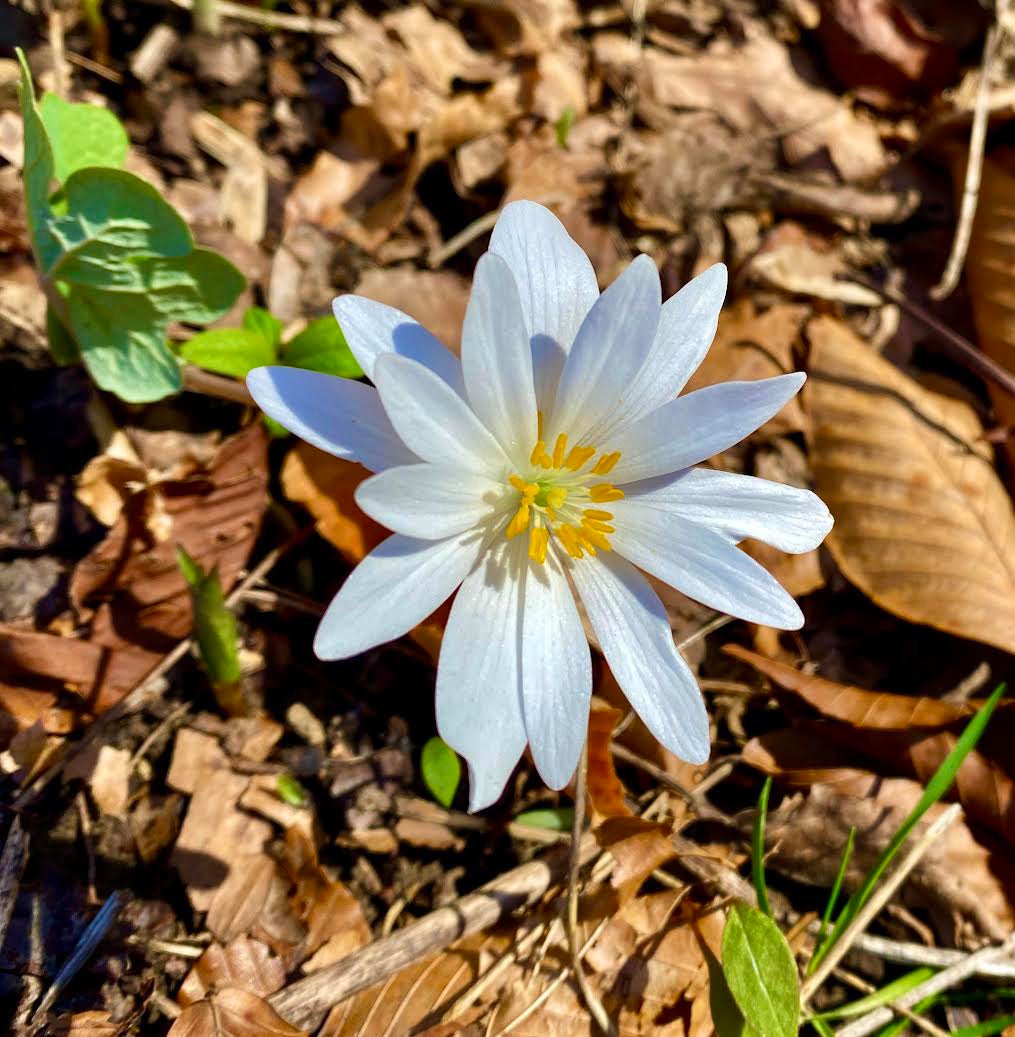An early sign of spring; Though not recommended for consumption, bloodroot has several medicinal purposes
Published 8:30 am Friday, March 10, 2023

- Though pretty to look at, bloodroot is not recommended for consumption. Photo by Steve Roark
BY STEVE ROARK
Contributing columnist
One sure sign of spring and warmer weather is to take a walk in the woods and see the first wildflowers popping up. One of the earlier blooming flowers in our area is bloodroot.
Bloodroot (Sanguinaria canadensis) is usually found in rich woodland areas where the soil is deep and moist, such as in the bottom of hollows, especially along streams. It is a small perennial plant that grows to 6 to 8 inches tall. The flowers bloom mid-March to early April and appear a little ahead of the leaves. They are white, daisy-like blooms around 2 inches across with 8 to 10 petals.
When they appear later, the leaves are uniquely shaped, having a deep cleft where it attaches to the stem and a rounded lobed edge. If you dig just under the soil at the base of the plant you should find reddish colored roots that when broken will bleed a very red juice, hence the name.
Bloodroot is considered toxic and consumption is not recommended. However, the plant was extensively used by Native Americans and early pioneers for a number of medicinal purposes. Indians made a tea to treat rheumatism, bronchitis, lung ailments, laryngitis and fevers. They also used the root to treat warts and as a decorative skin stain. Pioneers used the plant as a cloth dye by combining it with oak bark. The superstitious would carry a piece of bloodroot as a charm to ward off evil spirits, and it has been used as an ingredient in a love charm.
Study of bloodroot has shown that it does indeed have medicinal benefits, containing antiseptic, anesthetic, and anti-cancer qualities. Commercially it is used as a plaque-inhibiting agent in toothpaste, mouthwash and rinses. There is a market for the root and it is dug and sold locally to herb dealers.





